Math You Can Touch
2025 Creative challenge
This year’s creative challenge is constructing mathematical elements using everyday physical objects (such as household items, objects from nature, or even people). Use your artistry and creativity (this year’s theme!) to make sculptures that bring mathematics off the page and into the real world!
Create mathematical elements such as
- geometrical shapes,
- patterns or sequences,
- formulas,
- numbers and mathematical symbols,
- curves and spirals,
- magic squares and other mathematical puzzles,
- tesselations,
- fractals,
- and more…
… using everyday things like
- forks, spoons, and other kitchen utensils,
- coins, keys, and buttons,
- books, pencils, paperclips, and rubber bands,
- twigs, leaves, and pebbles from outside,
- socks, shoelaces, and other clothing items,
- toothpicks, and modeling clay,
- dry pasta, nuts, and candy,
- your friends and family,
- and anything else that you can think of…
Some examples and ideas
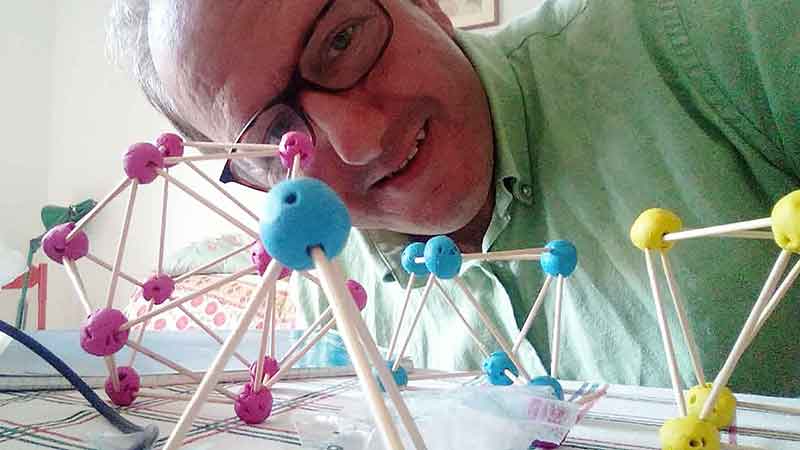
Build geometric bodies and other constructions using toothpicks and modeling clay. [1]
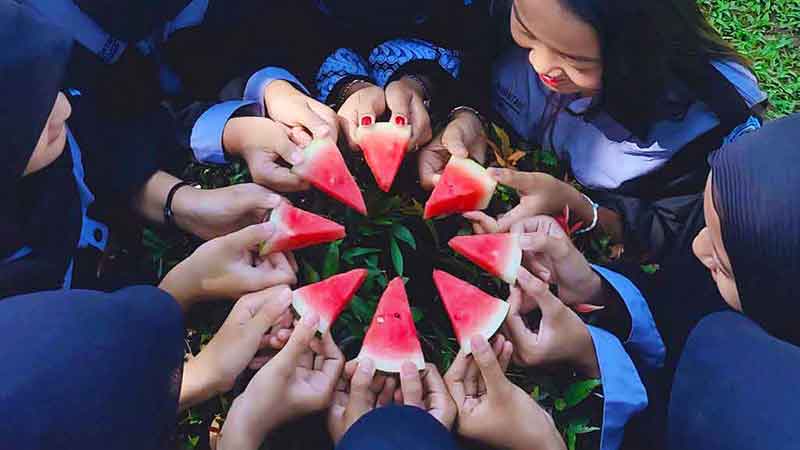
Represent mathematical ideas using flowers, fruits, and vegetables. [2]
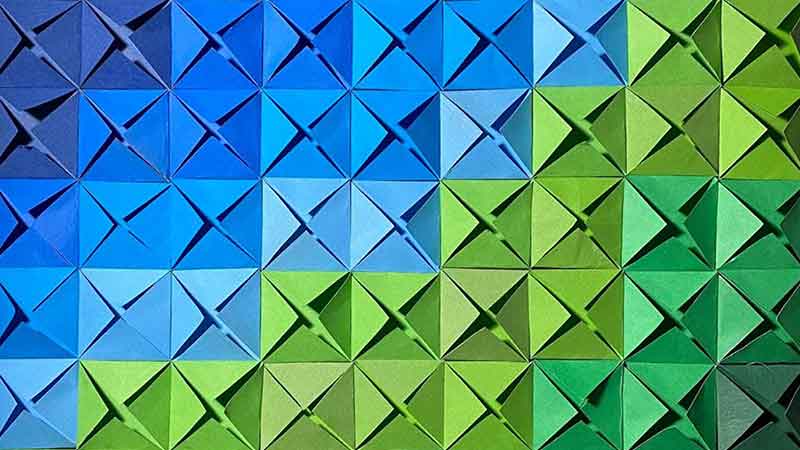
You can create many kinds of mathematical structures using paper, fabric, and other common materials. [3]
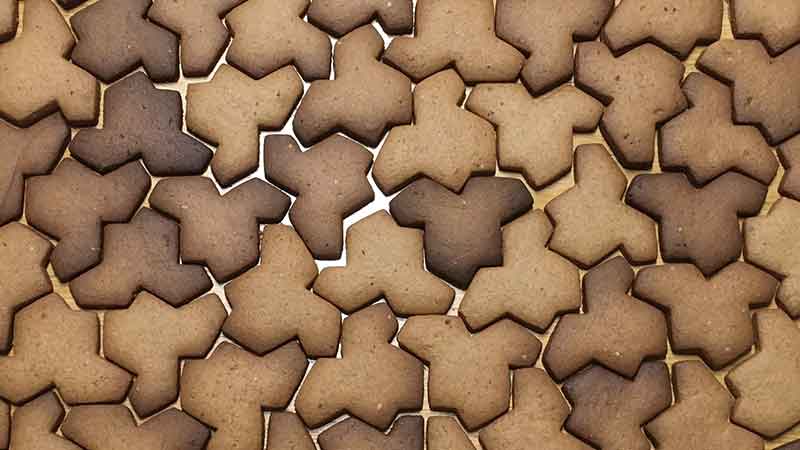
Bake cookies that follow a tiling, like the Einstein tile used in the picture (the pattern can be found on page 10 of this file, a 3D-printable cutter is also available) [4]
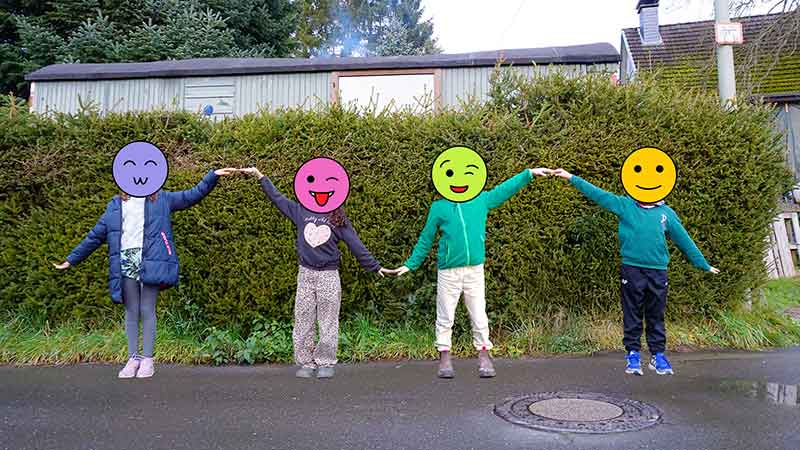
Create a repeating pattern (like this sine wave) with the help of your friends. [5]
Send us a photo of your creation
You can send us your photo until
March 10, 2025
using the form linked below. We'll publish a gallery with some of the best ones we receive.
Follow us on social media or
subscribe to our newsletter
for future announcements.
Everyone can participate. Share the challenge in your school or university. Team up!
Submit a photo of your creation
The challenge is finished. See the results.
Rules of the challenge
- The challenge is open until the end of March 10, 2025.
- Send a photo of a mathematical element constructed from everyday objects (see examples above). You can include yourself and other people along with your creation. We’d love to see where you live, so use the chance to show us your city, town, village, landscape, school, or workplace.
- You can send multiple photos, but they should be of different creations.
- Be sure to ask for permission from anyone in the photo. If minors appear in your picture, you should ask for their permission and that of their parents or guardians.
- If you want to protect your identity or anyone else’s or would prefer not to show your face for any reason, feel free to wear a mask, use glasses and a wig, or cover it with an emoji (you can use our official IDM smiley faces).
Technical details
- Send your photos in JPEG format.
- Square photos (1:1) work best! But you can also send photos in vertical (portrait) or horizontal (landscape) orientation.
- Try to use a resolution of 1200x1200 pixels or larger, but preferably not bigger than 4800x4800 pixels.
Tips for taking a good photo of your creation

- Rule of thirds: If you divide the photograph area into thirds both vertically and horizontally, the key parts of the photo should be located at the intersection of the divisions.

- The space around the subject of a photo is called “negative space.” Make sure your image includes enough negative space to balance the area of the subject. Your composition will improve if you pay special attention to the negative space when framing your picture.
- Make sure the light source (the sun or lamp) is in front of the subject, so it lights them from the front.
- Make sure the camera doesn’t move to avoid blurry photos. Press your arms against your body, exhale and press the shutter lightly, use some object to support the camera, or use the timer function.
- Show your creation in context! Your photo will be more interesting if it shows the place where it was taken, or if it includes you and the people you worked with.
Art to inspire you
Throughout history, many art movements (for instance, Concrete and Neo-Concrete art, Constructivism, and Bauhaus) built sculptures (as well as buildings, and other objects) using geometric shapes and layouts.
Kinetic art uses the movement of the artwork or the spectator to create interesting effects. It often relies on math for its constructions.
Land art is a type of art that uses natural materials (like soil, rocks, vegetation, water, etc.) to create art in the landscape.
This choreography by Sadeck Berrabah is a beautiful example of geometric shapes created with human bodies.
Modular origami creates complex mathematical shapes by combining many copies of simpler small modules.
“The MegaMenger may be the largest fractal ever built, made out of over a million business cards and encompassing the entire Earth.”
Image Credits
- [1] Photo by Savino Longo (Bari, Italy), published under the Creative Commons CC BY-SA 4.0 [creativecommons.org] license. Cropped and recolored from the original
- [2] Photo by Nurul Wahyuni (Lubuklinggau, South Sumatera, Indonesia), published under the Creative Commons CC BY-SA 4.0 [creativecommons.org] license. Cropped and recolored from the original.
- [3] Photo by Beril Naz Ülgen (Erenler (Sakarya), Türkiye), published under the Creative Commons CC BY-SA 4.0 [creativecommons.org] license. Cropped and recolored from the original.
- [4] Photo by Nikolay Tumanov [x.com], used with permission. Cropped from the original.
- [5] Photo by Imaginary gGmbH, published under the Creative Commons CC BY-SA 4.0 [creativecommons.org] license.